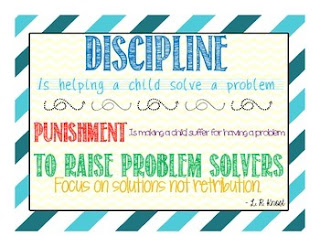When you hear the words, Family Traditions, what comes to mind? For many of us, we think of the holidays we celebrate. Whether your family celebrate Christmas or Hanukkah or Ramadan or Diwali or any of the other amazing holidays from around the world, the traditions around these holidays are important. Children learn about their culture, heritage and possibly religion through holiday traditions.
It is important to remember that traditions go beyond just what we do for the holidays. According to Meg Cox, author of The Book of New Family Traditions: How to Create Rituals for Holidays and Every Day, traditions are "anything big or small, that families perform together deliberately, providing there is repetition or dramatic flourish that elevates the activity above the ordinary grind." Cox further explains, "even simple activities can be transformed into a satisfying and memorable rituals, such as singing a certain song whenever you give your child medicine, or always declaring an evening study break for hot cocoa on winter weeknights."
Family traditions have many benefits for children.
- Family traditions create good memories. Think back to your own childhood. What positive memories do you have? More than likely these memories are connected to family traditions. My mom took us camping during summers when I was a child. These camping trips always included a lot of fun whether it was sitting around the campfire making smores or riding our bikes or playing games around the campsite.
- Family traditions builds consistency. Kids like know what will happen and what to expect. In fact, they thrive on these things. Traditions help build this consistency.
- Family traditions connect us together. One of our family's traditions is to have family meals together. As my kids have grown these don't happen every night, but it is still a priority for us. Family meals are a time for us to connect with our kids and hear about their days and when they were young, we shared our highs and lows during dinner. Building these connections are extremely beneficial. Studies show that kids who are able to cope with challenges in life are the ones who are bonded and close to their families.
- Family traditions help build our sense of identity. Our traditions tell us who we are and what we do as a family. Playing kickball in our yard is a big tradition at my house. Our family has a healthy sense of competition. We like to compete with one another through games and sports. Our after-dinner kickball games throughout the summer helped foster this in our kids. They have carried that sense of competition into other parts of their lives, whether competing to do well in school or working hard to achieve their goals in their favorite sports.
- Family traditions help teach family values. The traditions we do with our families help communicate our values to our children. One tradition my family had was our annual toy review. We would go through all of the toys in the house and determine if it was something the kids still played with. Any toys that they had outgrown were then donated. Now that our kids are older and don't really have toys, we have switched to adopting a family during the holidays to help make sure the family has a special holiday. Our kids look forward to this every year and know that it is important to us to share what we have with others.
- Family traditions give us something to look forward to. Prior to Covid, my husband traveled a lot for his work. A few years ago, he started a tradition of taking each one of our kids and at least one of their friends on one of his work trips. They would spend a few extra days doing fun activities. Our kids and their friends looked forward to this trip every year. This is such an important tradition for our family that after having to skip it the summer of 2020, we ended taking all five of us plus five of my kids' friends on a trip to San Diego this summer! My husband wasn't traveling enough to fit in three separate trips so we decided to do one big trip together so our kids wouldn't have to miss out on this for another year.
- Family traditions are fun. Whether we are playing kickball in the yard or taking a trip or sitting down to eat a meal together, our family enjoys the time we spend together doing our family traditions. An added benefit to this fun component of family traditions is that participating can increase the positive mood of everyone in your family. This can make other more routine parts of your day easier to manage.
- Turn part of a routine into a tradition. Our bedtime routine was very important for our kids when they were little. It included the usual things like brushing teeth, putting on pajamas and reading a book but each of our kids had their own special song that my husband and I sang to them before they went to sleep. This is what turned our routine into a tradition.
- Keep it simple. Traditions do not have to be elaborate or complicated to be meaningful. Every time I drop my kids off before one of their sporting events, I give them a fist bump and say, "Play hard. Have fun." This may seem like something simple and almost meaningless, but I know that it is meaningful to my kids. In fact, just last night as I was heading out the door to go to my hockey game, my son said, "Hey mom, play hard. Have fun."
- Do things that you enjoy. My family enjoys playing sports so many of our traditions are tied to playing sports together, like kickball in the yard. If your family enjoys music, have a dance party after dinner. If you enjoy art, spend time creating together as a family.
- Volunteer as a family. Spend time helping others as a family. You can volunteer with various organizations, or you can do simple things like picking up trash in a neighborhood park or make a special treat to share with a neighbor. Not only can you have fun, but you are also teaching your children the importance of helping and being kind to others.
- Spend time 1-on-1 with your child. Our family did monthly 1-on-1 dates. One month I would take each of my daughters out for a special date and my husband would take our son. The next month we would switch. These dates were simple. Sometimes we would go for a bike ride or to the park. Other times we would go out for ice cream or dinner. The important thing was our kids got to pick what we did, and we got to spend time 1-on-1 with each of our kids.




















